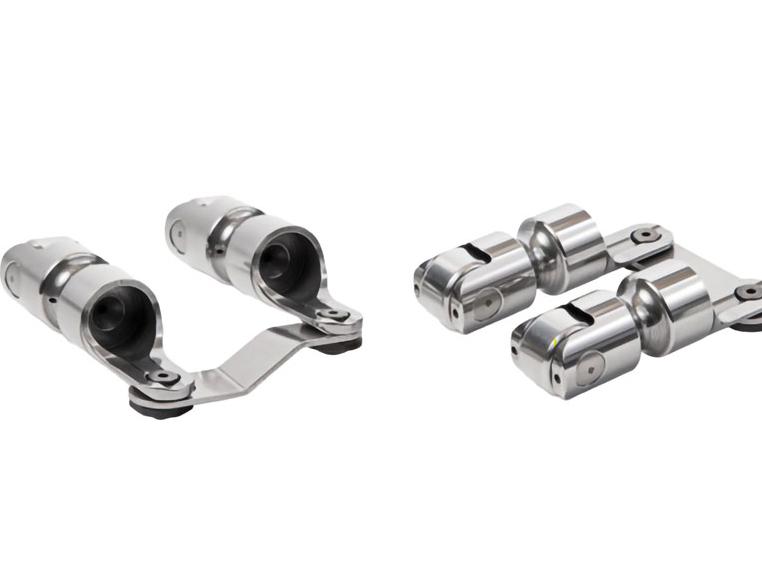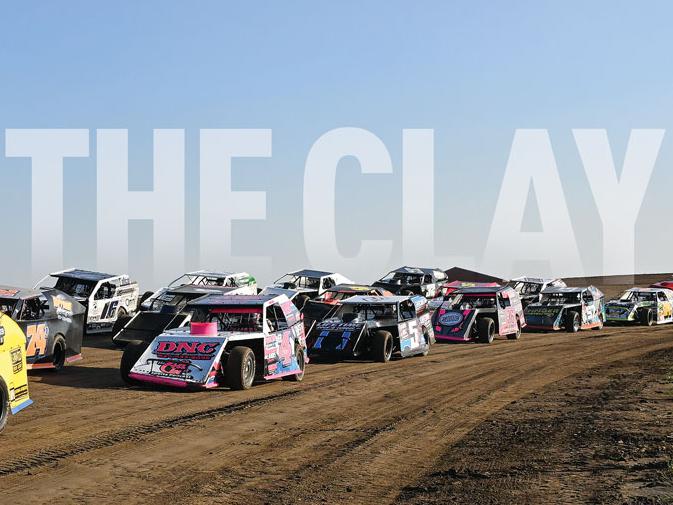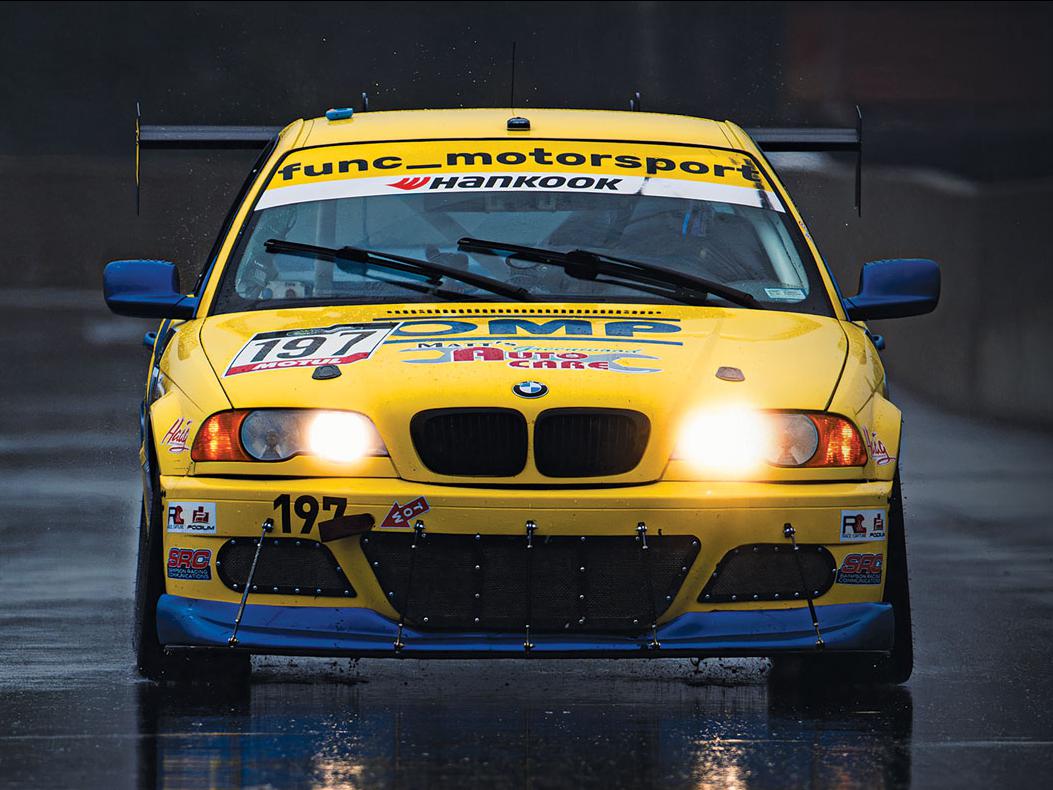Slide By Design
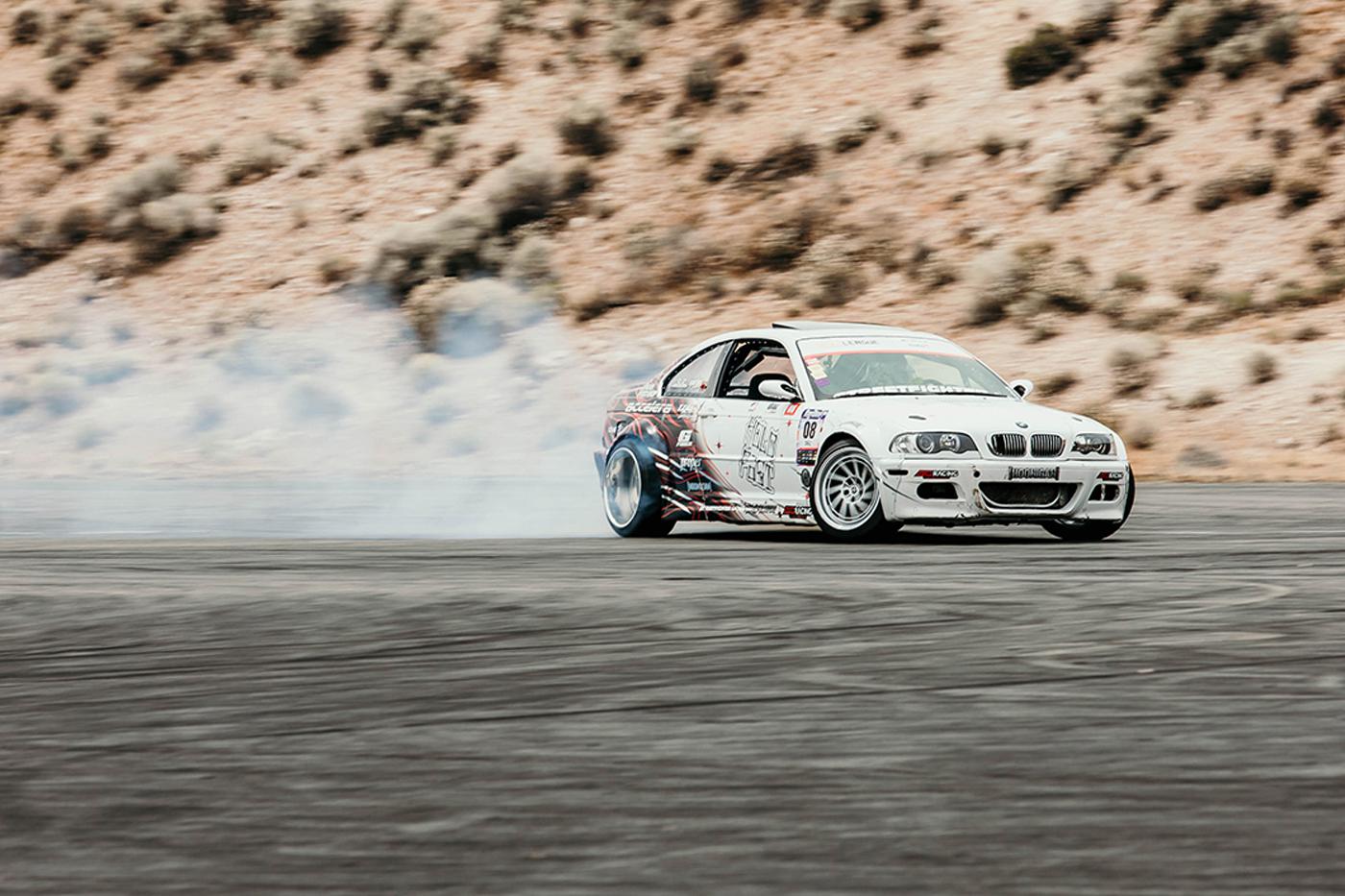
Specialists reveal inside strategies to building and maintaining a race-ready drift car.
While the origin story of drifting is one of impromptu touge street races along the winding mountain roads of Japan in the 1970s, the latest chapter of the saga is now largely being told on race tracks across the United States. As one of the fastest growing motorsports disciplines worldwide, drifting has attracted a younger set of enthusiasts and competitors due in part to its appeal at the grassroots level as well as the diligent work of series like Formula Drift, the premier sanctioning body for drifting competition in America.
As the sport continues to mature and the rule sets are further refined, the sophistication of the builds involved at all levels of the sport have improved in turn. That’s not only raising the bar for racers, it’s also giving fans and aspiring competitors plenty of creative fuel for their own projects.
“Before it started to take off a couple years ago, drifting was really just something for a select few,” said Nolving Melara of Apocalypse Racing, Temecula, California. “It was kind of like a niche genre of music that really only appealed to certain people, but now it has become mainstream. It’s not just stuff from Japan anymore—American muscle is getting into it, and the Europeans as well. Back in the day when we used to go to drift shows, it was mainly Nissans and Mazda Miatas. Now it’s not uncommon to see a Corvette and BMW 3 Series going head to head.”
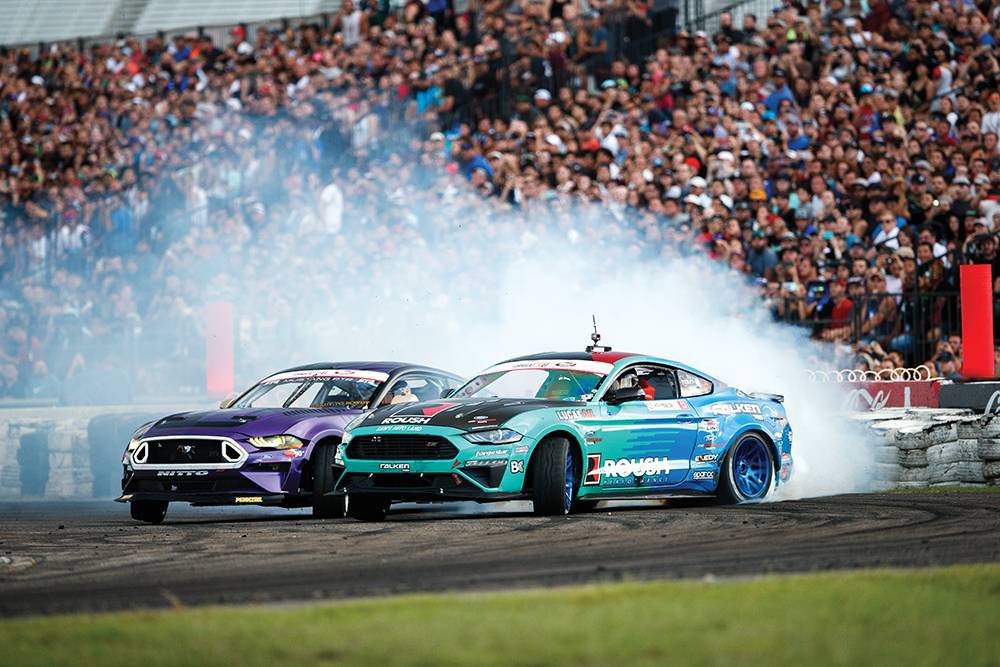
Daniel Mendoza of SSWORXS in Modesto, California, noted that the American drifting market has eclipsed all other regions worldwide. “It’s bigger than the Japanese side by a significant margin—the attendance is huge. If you go to a Formula Drift event, you’ll notice that the drivers are coming from all over the world to compete in the US, and foreign companies are now looking at the American market as the nerve center.”
With strong support from both aftermarket suppliers and sponsors, the evolution of the discipline continues at a brisk pace as programs and class structures are developed to provide a clear path up the ladder for grassroots racers while still allowing teams to be creative in the garage. And more and more often, that creativity involves a lot of horsepower.
“Power levels are up across the board, along with performance overall,” observed Aaron Kahn of Driftmotion, Montclair, California. “It used to be that you could pick up a fairly stock vehicle, put some basic mods on it, and be competitive. Now they’re back-halfing the cars, and the power levels have gotten to the point where if you’re making 900 horsepower, it’s like, ‘Oh—that’s it?’”
The grunt isn’t just for bragging rights, though. “The judges want to see you carrying speed through the whole course, lots of smoke, and the power allows you to keep close proximity with the car in front of you,” he added. “It’s basically a drag race to the first turn, so if you can gap the guy behind you as you head for that corner, you stand a better chance of keeping that distance through the whole course (which reflects negatively on the trailing car) and winning.”
But with engines on boil throughout most of a given run, horsepower levels venturing well into four-digit territory, and even the smallest of mistakes often resulting in unscheduled meetings with retaining walls, drift cars certainly see no shortage of abuse. And that means keeping them alive and well throughout the course of a season—or even the course of an event—can be a formidable challenge in and of itself.
Prepped For Primetime
Even at the ground level, the old adage that “there’s no replacement for displacement” has begun to resonate with drift competitors in recent years. “These guys are starting to really get into Fox-body and SN95-generation Mustangs, along with C5 and C6 Corvettes,” Mendoza said. “And that’s if they’re not running an American power plant in their BMW or Japanese chassis of choice. The trend started about 10 years ago, and at this point it’s becoming the go-to option. You’ll still see the famous Toyota 2JZ here and there, but the American power plants are superior for this kind of competition. The torque availability for a driver is just insane, and that kind of response is generally harder to get with the Japanese engines. The V8s also tend to last longer, and there’s less complexity, which means there’s less to go wrong.”
While Ford’s modular V8s have a substantial presence, and even the Gen III Hemi pops up on occasion, it likely comes as little surprise that the LS platform is by far the most popular means of motivation for the V8 faithful in the drift scene. “For the average competitor that’s looking to climb the ladder, they’re going to start with some kind of LS combination,” Mendoza added.
Melara said that starting with an LS is often the most cost-effective way to develop a competitive car, even at the grassroots level, whether the platform is LS-native or not. “If you build the 3.5-liter V6 in a 350Z with a turbo kit, you’ll probably end up pushing 500 horsepower to the wheels, maybe a bit more. But with these LS swaps, you can get to that power level with a naturally aspirated engine by just throwing a few bolt-ons at it. And with the way those engines develop torque, you can just drop the hammer and instantly light up the tires—there’s no real need to launch the car.”
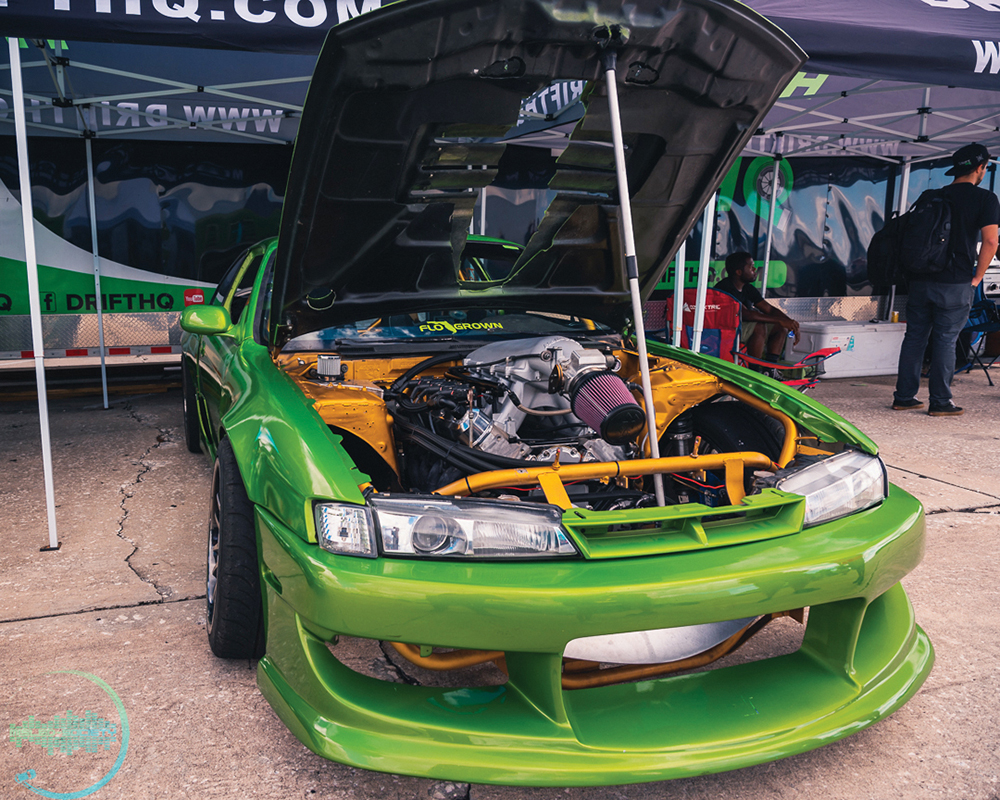
Joel Garcia of Drift HQ in Fort Meyers, Florida, explained that while naturally aspirated LS builds are still common, forced induction combinations are quickly taking over. But without the burden of engine restrictions in most classes, the method of delivering that boost often comes down to personal preference. “Blowers provide more linear power delivery than most turbo setups, but they also generate a lot of heat, and you have to contend with belts ripping,” he said. “Cog belts have a reputation for holding up to high loads, but some of the drivers complain that it affects the smoothness of the power delivery. Whipple-style superchargers are popular, but ProCharger also just sponsored their first drift car in Formula Drift Pro 2, so we expect to see more of them in the drift scene going forward.”
With high lateral loads a near-constant occurrence in drifting competition, oil starvation is a big concern for competitors using LS power, in particular. “You’re violently sloshing the oil from one side of the engine to the other,” Mendoza said. “That’s why you see a lot of guys running Accusump systems, or at least some sort of dry sump setup.”
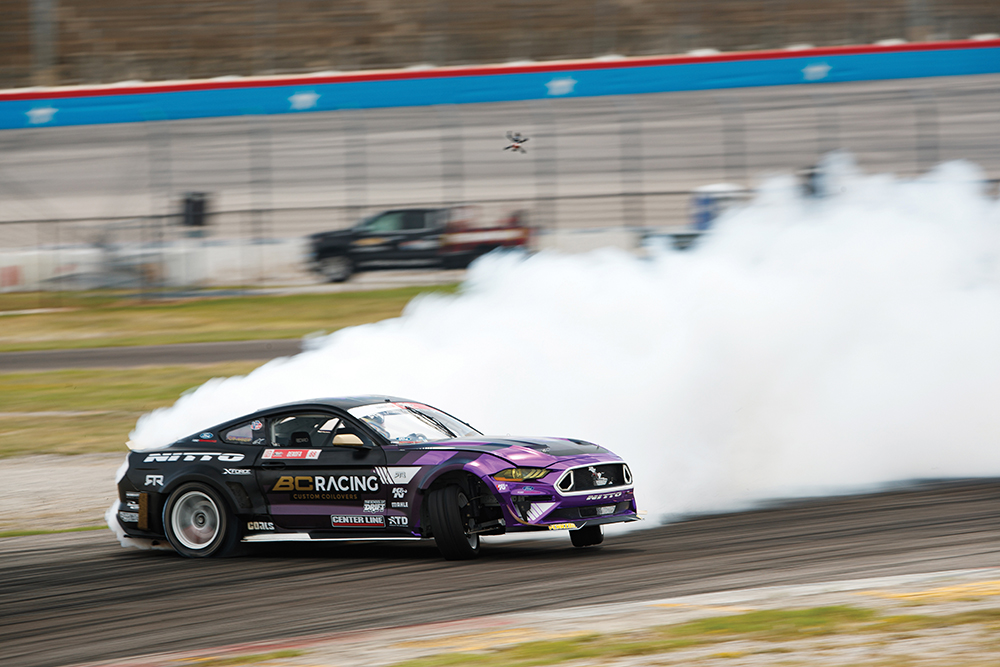
Although V8s have become more prominent in drifting, Kahn said that a significant contingent still see the virtue in the classic combinations. “The JZ has proven itself to be one of the best platforms out there. You can make a lot of horsepower with a 2JZ, it’s fairly easy to work on and maintain, and they’re reliable. Some of the folks that moved to V8s have come back to this platform because they want something that can withstand this kind of abuse at really high rpm. We can build 800-wheel horsepower on fairly mild combinations with no problem. We’re talking about a stock block and crank with just cams, rods, pistons, and boost.”
Regardless of the powertrain combination, one concern for virtually all competition-level drift cars is cooling. “Cooling systems are super important because you’re using tons of throttle, but the cars are moving at a relatively low rate of speed,” Kahn said. “And because you’re sideways, you’re really not getting much airflow through the front of the car.”
And that means that electric engine fans are a popular upgrade, as are the systems that support them. “Charging systems are overlooked on a lot of cars—guys get out there, run a few laps, and suddenly the alternator is burned out and they’re dead in the water after the battery is drained,” he said. “We noticed that guys were bringing two or three alternators to a race, so we got with DC Power to develop a bolt-on high output 2JZ alternator as well as heavy-duty battery cables. A lot of these guys don’t even know that they need this stuff until they’ve seen it done right.”
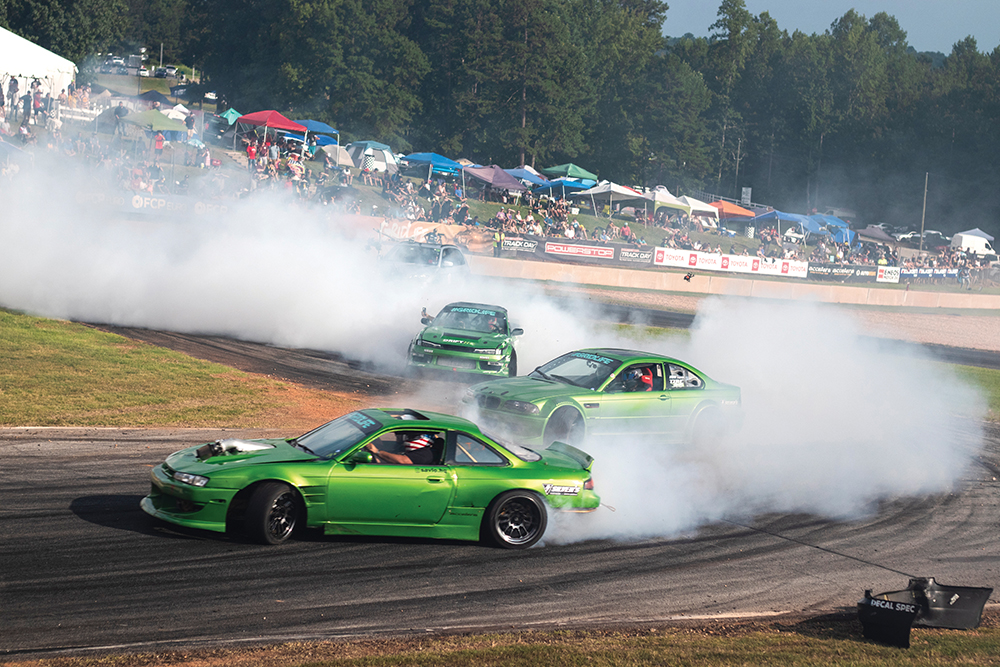
The cooling requirements don’t stop at the engine bay, though. “A lot of these transmissions and rear differentials die a slow, painful death as a result of excessive heat,” said Melara. “A good crew will go through these after every competition, replacing the fluid and checking for metal shavings or anything like that—that’s just good practice. Transmission and differential coolers can definitely make a difference in the longevity of those systems.”
And, of course, the suspension system is another key area of focus both when preparing for a race or doing work between runs. “At higher levels of competition, most of the suspension joints are going to be spherical,” said Garcia. “They’re lubed externally and don’t have a boot to protect them, which means that a lot of grime gets into them, so they need to be serviced regularly. Components like heim joint ends wear out quickly as metal rubs against metal. Grassroots guys might be able to get through a light season with a set, but in a professional setting you’re changing these every other round.”
Part of the reason these components are designed this way has to do with the format and overall nature of drifting competition, he explained. “If you’re in the middle of competition and you have five minutes to change something out, you’re going to want to be able to easily see if the part is worn and replace that part quickly. Some of these parts are also designed to collapse on themselves if you crash—that way you’re not destroying the rest of the suspension components or the frame of the car itself. So instead of sacrificing the knuckle, which is basically the core suspension component, you could just be changing lower control arms or the tie rods.”
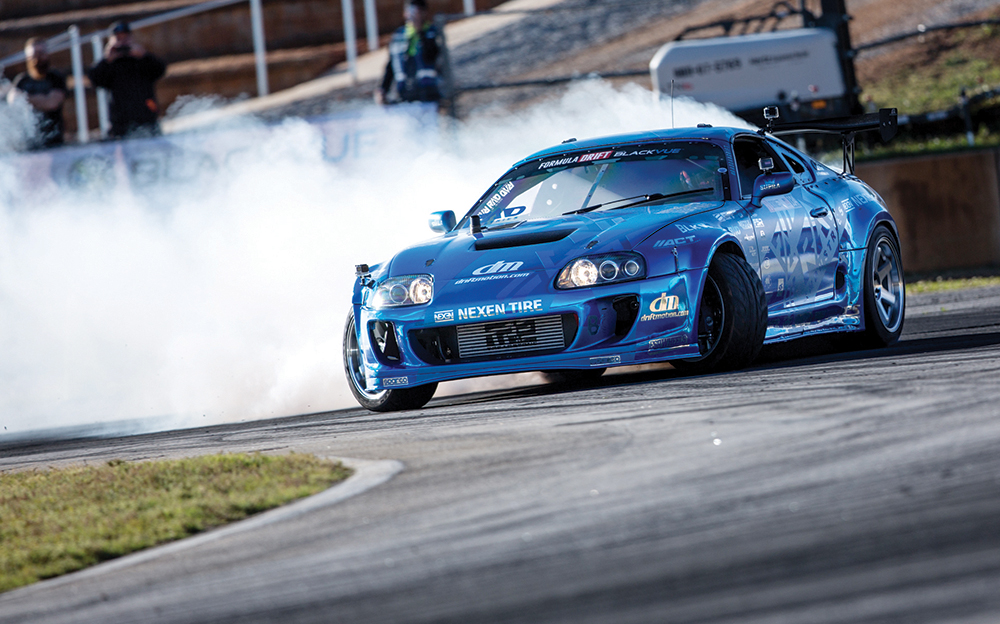
The time between events during the race season gives teams the opportunity to go over their setups more extensively to make any necessary changes in preparation for the next race. “That gives you time to do all the fluids, the spark plugs, the tires, change out fuel, and take a look at the shocks,” Mendoza said. “Guys are constantly going back and re-valving to get more grip out of whatever suspension setup they have.”
Wrenching In the Offseason
The stretches of downtime during the winter months give teams a chance to establish a larger game plan for the upcoming year. “They’re often researching where they’re going to be competing at to get a better understanding of what compound and suspension tunings will work the best at those venues,” said Melara. “What works great at one track might not work well at another, so tires and suspension are a big focus.”
For others, it offers the opportunity to make substantial changes to their setup, or just completely rework their approach. “A lot of the guys running in higher level competition are revamping the whole car,” said Garcia. “That’s everything from the aesthetics and body kit to the cage structure and engine combination. Full teardowns are typical, so they’re either re-doing everything, or just building a whole new chassis.”
And some of that comes out of necessity rather than just preference, Mendoza said. “You’re at least doing a full teardown of the motor, transmission and rearend. That gives you a chance to really inspect everything and look for any potential issues before they become big problems down the road. That time also allows teams to modify their programs to accommodate any new sponsorship agreements they may have. Sponsorship proposals generally get moving two rounds before the end of the season, as that gives potential sponsors a good idea of where you are as a contender and what your marketing campaign looks like. It plays a big role, but it’s also an aspect of competitive drifting that’s still very much in its infancy.”
 MEMBERSHIP LOGIN
MEMBERSHIP LOGIN JOIN PRI
JOIN PRI
